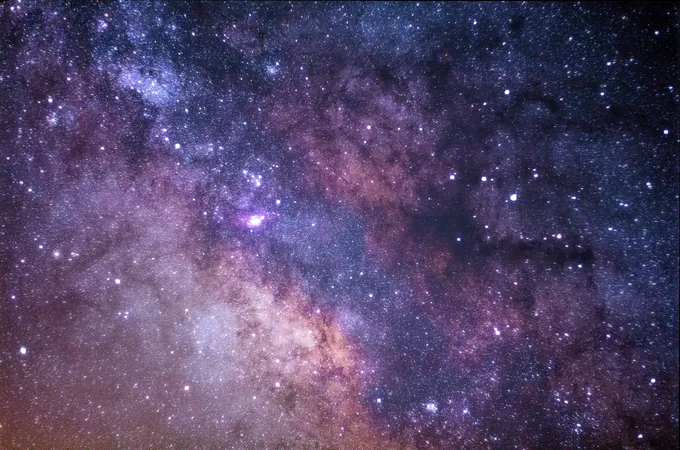
Discover the Groundbreaking Insights into the Convection Processes of Massive Stars!
2024-11-21
Author: Jia
Groundbreaking Insights into Convection Processes of Massive Stars
Researchers at the Yunnan Observatories of the Chinese Academy of Sciences have made an astonishing breakthrough in the field of astrophysics by simulating the evolution of massive stars with masses ranging from a staggering 50 to 150 times that of our Sun. Their focus was on the nitrogen sequence Wolf-Rayet (WNL) star phase, where remarkable phenomena occur.
Understanding the k−ω Model
At the heart of this research lies a newly developed k−ω model—revolutionizing our understanding of convective overshooting within the interiors of these colossal stars. This sophisticated model allows scientists to dissect the complex processes that affect mass and energy transfer within stellar bodies, paving the way for deeper insights into how these cosmic giants evolve.
Why WNL Stars Matter
WNL stars are particularly fascinating because they form during a star's core hydrogen burning phase. As they age, fierce stellar winds strip away their outer envelopes, leading their surfaces to become enriched in nitrogen—a telltale sign of their intense internal processes. Understanding WNL stars is crucial because they serve as a window into the convective processes and mass loss mechanisms that dictate stellar evolution.
A Revolutionary Approach
The team's groundbreaking study, published in *The Astrophysical Journal*, sets the k−ω model against the traditional exponential decay model, which has long been the standard in handling the overshooting zones of stellar evolution. The researchers found a striking difference: the k−ω model significantly predicts a wider range of mass and lifetime evolution for WNL stars, especially under identical initial conditions such as mass and metallicity. But that's not all—this innovative model also lowers the formation limit for WNL stars by effectively widening the mixing zone of materials inside the star.
The Surprising Influence of Rotation
Even more intriguing is the consideration of stellar rotation in these simulations. The researchers reveal that rotation plays a pivotal role in the formation of lower-mass and metal-poor WNL stars, an effect that becomes evident when comparing to previous models. This discovery opens new avenues for how we understand stellar dynamics and their evolution across different environments.
Changing Perspectives on Stellar Evolution
Ultimately, the implementation of the k−ω model not only sheds light on the convective processes in massive stars, but it also provides alternative methods for interpreting the initial conditions and evolutionary histories of stars we observe in the universe. This transformational research invites astronomers to rethink existing theories and explore the untapped mysteries of stellar life cycles.
Conclusion
Prepare for an era of renewed exploration in stellar astrophysics, as this study unlocks innovative pathways to understanding the life phases of some of the most colossal and enigmatic stars in our galaxy!





 Brasil (PT)
Brasil (PT)
 Canada (EN)
Canada (EN)
 Chile (ES)
Chile (ES)
 Česko (CS)
Česko (CS)
 대한민국 (KO)
대한민국 (KO)
 España (ES)
España (ES)
 France (FR)
France (FR)
 Hong Kong (EN)
Hong Kong (EN)
 Italia (IT)
Italia (IT)
 日本 (JA)
日本 (JA)
 Magyarország (HU)
Magyarország (HU)
 Norge (NO)
Norge (NO)
 Polska (PL)
Polska (PL)
 Schweiz (DE)
Schweiz (DE)
 Singapore (EN)
Singapore (EN)
 Sverige (SV)
Sverige (SV)
 Suomi (FI)
Suomi (FI)
 Türkiye (TR)
Türkiye (TR)
 الإمارات العربية المتحدة (AR)
الإمارات العربية المتحدة (AR)